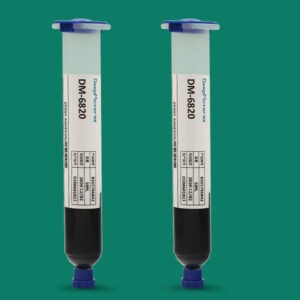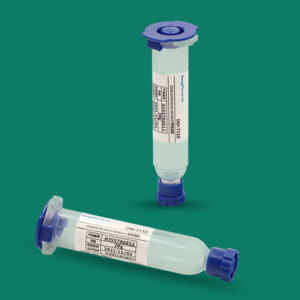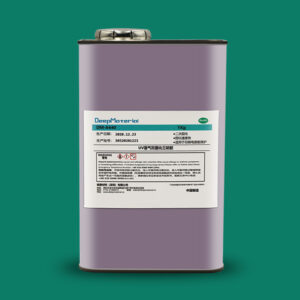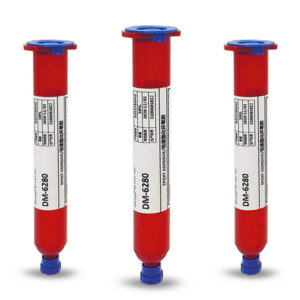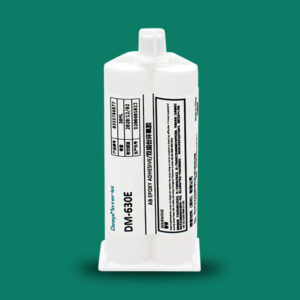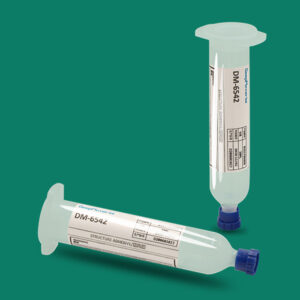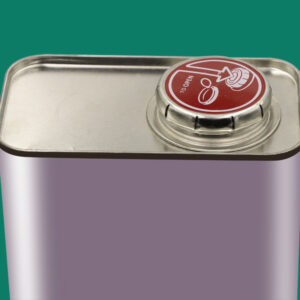Silicone-Based Fireproof Glue Is the Best Industrial-Grade Fire Protection
Silicone-Based Fireproof Glue Is the Best Industrial-Grade Fire Protection
In an era where industrial safety is paramount, the demand for advanced materials that can withstand extreme conditions has never been higher. Enter silicone-based fireproof glue—a revolutionary adhesive that combines the elasticity of silicone with exceptional flame-retardant properties. This industrial-grade solution is designed to provide robust fire protection in environments where traditional adhesives falter, such as high-temperature manufacturing plants, construction sites, and transportation systems. Unlike conventional glues that may combust or degrade under heat, silicone-based fireproof glue forms a protective barrier that not only bonds materials securely but also actively resists fire spread, reduces heat release, and minimizes toxic emissions.
The significance of this adhesive lies in its ability to enhance safety across various sectors. For instance, in construction, it can seal joints in fire-rated walls, preventing flame penetration. In aerospace and automotive industries, it ensures components remain intact during thermal stress. With global regulations tightening on fire safety—such as those from the International Building Code and NFPA standards—the adoption of such materials is surging. This article delves into the history, science, properties, applications, benefits, and future of silicone-based fireproof glue, highlighting why it’s becoming a staple in industrial fire protection strategies.
At its core, silicone-based fireproof glue is formulated from polydimethylsiloxane (PDMS) polymers, often enhanced with fillers like aluminum hydroxide (ATH) or metal oxides to boost its flame-retardant capabilities. These enhancements allow it to endure temperatures exceeding 600°F (315°C) without losing integrity, making it ideal for scenarios where fire hazards are imminent.
As industries push for sustainable and efficient solutions, this glue stands out for its environmental friendliness, producing minimal smoke and no halogenated toxins during combustion.

History and Development
The evolution of silicone-based adhesives traces back to the mid-20th century when silicones were first synthesized for military applications during World War II. Initially developed by companies like Dow Corning in the 1940s, silicones were prized for their heat resistance and flexibility, used in aircraft seals and electrical insulation. The transition to fireproof variants began in the 1970s amid growing concerns over industrial fires, such as the infamous MGM Grand Hotel fire in 1980, which underscored the need for better flame-retardant materials.
By the 1980s, researchers started incorporating flame-retardant additives into silicone matrices. A key milestone was the development of platinum-catalyzed silicones, which improved cross-linking and thermal stability.
In the 1990s, environmental regulations phased out halogen-based retardants, paving the way for silicone alternatives that offered low toxicity. Studies from institutions like the National Institute of Standards and Technology (NIST) tested these adhesives in simulated fire scenarios, leading to formulations that could form insulating silica residues.
The 2000s saw advancements in nanotechnology, with carbon nanotubes and mineral fillers like wollastonite integrated to enhance performance. Today, products like Sylgard 184—a two-component silicone elastomer—represent the pinnacle of this technology, tailored for industrial use. Collaborative efforts between academia and industry, such as those documented in reviews on polymer degradation, have refined these glues for specific applications, ensuring they meet stringent standards like UL 94 for flammability.
This historical progression reflects a shift from basic sealants to sophisticated fireproof systems, driven by safety demands and technological innovation.
The Science Behind Silicone-Based Fireproof Glue
Understanding the science of silicone-based fireproof glue reveals why it’s superior for fire protection. At the molecular level, silicones consist of alternating silicon-oxygen chains, providing inherent thermal stability. When exposed to heat, they undergo depolymerization—either through unzipping or random scission—producing cyclic oligomers and leaving behind a silica residue that acts as a thermal barrier. This residue insulates the substrate, reducing heat transfer and preventing further combustion.
Flame retardancy is amplified by additives. For example, aluminum hydroxide (ATH) decomposes endothermically, releasing water vapor that cools the material and dilutes flammable gases. Platinum compounds catalyze cross-linking, minimizing volatile formation, while metal oxides like titanium dioxide enhance residue integrity. In intumescent systems, the glue expands to form a char layer, further blocking oxygen and heat.
Mechanically, the elastomeric nature ensures flexibility, allowing it to absorb stresses without cracking. Chemically, it’s resistant to oxidation, UV, and moisture, maintaining adhesion in harsh environments. Cone calorimetry tests demonstrate this: samples with silicone adhesives show prolonged ignition times (up to 51 seconds) and reduced peak heat release rates (160 kW/m² versus 217 kW/m² for alternatives).
This multifaceted approach—combining barrier formation, endothermic reactions, and low flammability—makes silicone-based glue a scientific marvel for industrial fire safety.
Composition and Manufacturing Process
Silicone-based fireproof glue typically comprises a base polymer like PDMS, cross-linking agents, and flame-retardant fillers. A common formulation includes a two-component system: Part A (vinyl-terminated silicone) and Part B (hydride cross-linker with platinum catalyst), mixed with 65% vinyl-silane treated ATH for enhanced retardancy. Additional fillers such as calcium carbonate or wollastonite improve mechanical strength.
Manufacturing begins with polymer synthesis via hydrolysis of dimethyldichlorosilane, yielding PDMS. Additives are dispersed using high-shear mixers to ensure uniformity. The mixture undergoes hydrosilation curing at room temperature or elevated heat, forming a rubbery network. Quality control involves testing for viscosity, cure time, and fire performance per ASTM standards.
Industrial-scale production uses automated extruders and vacuum mixers to minimize air entrapment, ensuring consistent batches. Eco-friendly variants avoid solvents, aligning with green manufacturing practices.
Properties and Benefits
The standout properties of silicone-based fireproof glue include exceptional heat resistance, flexibility, and chemical inertness. It operates effectively from -75°C to over 200°C, with some variants enduring 600°F.
Its low glass transition temperature ensures elasticity, preventing brittleness. Benefits extend to fire suppression: it generates minimal smoke and no flaming drips, crucial for confined spaces. Electrically insulating, it’s perfect for electronics, while UV and chemical resistance prolongs lifespan in outdoor or corrosive settings.
Compared to urethanes or epoxies, silicones offer superior environmental resistance and ease of application. They reduce maintenance costs by withstanding thermal cycling and provide a benign toxicological profile, making them safer for workers and the environment.
Industrial Applications
Silicone-based fireproof glue finds extensive use across industries. In construction, it’s applied in plywood lamination, where it forms protective layers to delay burn-through, ideal for cross-laminated timber in high-rise buildings. Sealants in fire-rated doors and walls maintain integrity for up to 4 hours in fire tests.
In transportation, it’s used in rail vehicles for pads that meet flame resistance standards, enhancing passenger safety. Automotive applications include bonding engine components, resisting heat from exhaust systems. Electronics benefit from its potting and encapsulation, protecting circuits from thermal shocks. Aerospace employs it for coatings on wires and seals, where low heat release is critical. In marine settings, silicone foams serve as deck coatings and firewalls. Other sectors like textiles use it for fire-resistant coatings, and defense for protective gear.
Case Studies
One notable case involves plywood manufacturing, where silicone adhesive with ATH reduced heat release by 26% and increased residue to 38%, preventing complete burn-through in 60-minute tests. This led to its adoption in timber buildings, improving structural fire safety.
In cable insulation, EVA composites with silicone achieved a limiting oxygen index (LOI) of 40.8, used in nuclear power stations to prevent fire propagation. Aerospace coatings with carbon nanotubes maintained temperatures below 350°C under extreme heat, extending component life in aircraft.
Challenges and Limitations
Despite advantages, challenges include lower shear strength compared to polyurethanes (0.92 MPa vs. 2.46 MPa), potentially requiring reinforcements. Higher costs and longer cure times are drawbacks. Future trends focus on nanocomposites for improved strength and hybrid systems for cost-efficiency.

Conclusion
Silicone-based fireproof glue represents a cornerstone of industrial fire protection, offering unmatched thermal resistance and safety. As industries evolve, its role will expand, safeguarding lives and assets in an increasingly hazardous world.
For more about silicone-based fireproof glue is the best industrial-grade fire protection, you can pay a visit to DeepMaterial at https://www.epoxyadhesiveglue.com/category/epoxy-adhesives-glue/ for more info.




